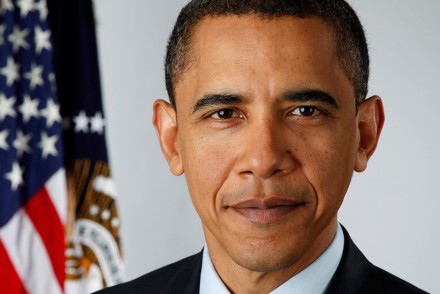Scandinavia’s tech startups, led by the music streaming company Spotify, and the clusters of life-sciences companies on either side of the Oresund bridge between Sweden and Denmark are the latest in a long tradition of innovative companies. But how different are they from the industrial holding companies that have dominated Swedish business not just for decades but in some cases, over a century?
Sweden is the second most prolific tech hub after Silicon Valley, one of the most digitally advanced countries in the world while Telia Sonera, the Finish-Swedish telecoms operator, and Ericsson, the Swedish telecoms giant have announced that Stockholm and Tallinn in Estonia will be the first two cities in the world with 5G telephone networks in 2018.
Technology is inescapable in the Swedish capital, from digitally connected public transport systems to iPads on which you order your meal at fashionable restaurants like Mother, to Swish a popular phone banking app. None of this is accidental: it reflects government subsidies for personal computers in the 1990s, the Swedish government’s commitment to broadband and fibre-optic and a belief that the next wave of Swedish prosperity would be based on digital connectivity. The investment is paying off.
Engineers built many of Scandinavia’s most successful international export businesses, from SKF to Atlas Copco while well-educated scientists helped create Denmark’s Novo Nordisk, whose early technology owed much to discoveries made by scientists at the local breweries. Backed by banks prepared to take a long-term view, Scandinavia produced several major international companies that are still at the top of the Nordic stock exchanges after almost a century. Today the engineers most in demand are computer engineers: almost half of Stockholm’s graduates today leave further education with coding skills.
Some of this goes back to the roots of Swedish capitalism and how it was funded. In the middle of the 19th century, Andree Wallenberg founded Enskilda Bank in Sweden. This performed a role similar to that of the private equity companies helping to finance today’s tech start-ups. When things became difficult for the bank’s customers, Enskilda stepped in and invested rather than see the company go under; this was how Atlas Copco came into the portfolio back in 1873.
Without this kind of capitalism, based on a shared interest in the key investment, it seems unlikely that many of the great Nordic companies would have got off the ground – and they certainly would not still dominate the local stock exchanges with a consistency unparalleled elsewhere.
In 1916, new legislation required banks to separate their banking and shareholding and investing businesses. Enskilda’s portfolio became Investor AB, whose portfolio, now in a separate unit, still includes Atlas Copco as well as SEB (the former Enskilda Banken), Electrolux, Saab, ABB, Ericsson and Husqvarna.
Investor AB, as the investor company, actively owns many companies, placing corporate power with shareholders, rather than management. Shareholders elect board directors and are involved in major strategic decisions. This model is found in many of the other major family/charitable foundation businesses in the Nordic region such as the investment company Kinnevik. Critics argue that the dual-class shares allow the families to retain control and that such companies are inherently over-conservative.
Christian Stadler, Professor of Strategic Management at Warwick Business School, concedes that the large controlling stake enjoyed by the owners can make things hard for other shareholders. But family businesses have other advantages. “Industrial dynasties like the Wallenbergs tend to have very strong personal networks, for instance” he observes, something borne out by Christina Stenbeck, who recently stepped down as executive chairman to concentrate on looking for companies in new areas in which to invest. Stenbeck has publicly admitted that being the owner has enabled her to open the doors of heads of state and others for Kinnevik’s businesses.
“CEOs of non-family businesses are under a lot of pressure to hit the numbers every quarter,” observes Professor Stadler. “Unfortunately, this also increases the pressure to discard strategies that don’t work immediately, but a glance at some of the most successful family businesses helps to illustrate why they should resist. Patience is a virtue when it comes to strategy.”
Stadler cites Investor AB’s role in saving Erikson as a major Swedish company in the 1930s as a positive example of the investor company’s wider social and economic role.
Marcus Wallenberg, the founder’s great-great-grandson said recently in an interview in the Financial Times, “We have stuck with many businesses where we were confident that doing so would create value in the long run. The capital markets need investors who recognize that the innovation cycle is often measured in years and that you can’t create successful product portfolios with a short-term view. In our part of the world, the presence of dominant long-term owners on the share registers – investors who feel a responsibility towards companies in difficulty – is an advantage.”
The long-term Nordic model is attracting interest worldwide from regulators and governments, including the European Commission, looking to head off financial crashes. Some believe that applied more widely elsewhere, it could reduce damaging short-term thinking and help local industries.
For investors, there is some empirical evidence that the structure of family and foundation companies found in the Nordic region can be beneficial. In 2013, Steen Thomsen from Copenhagen Business School and Henry Hansmann from Yale Law School suggested that companies owned by industrial foundations seem to perform as well as conventional investor-owned companies.
Using data from Nordic investor-owned and Nordic non-investor-owned companies of similar sizes in the same industry, they found that overall, foundation-owned companies have similar accounting profitability, take less risk, and grow more slowly than investor-owned companies. But other empirical studies of the economic performance of foundation-owned companies –using measures such as accounting profitability, growth, stock market value, or stock returns- suggest performance is on average no worse, or even slightly better than that of companies with more conventional ownership structures.
How easy would it be to export Scandinavian capitalism elsewhere?
Scandinavian capitalism is not just a structural thing, based on holding companies. The existence of investment companies prepared to take an exceptionally long-term strategic view has been integral to the success of many of Scandinavia’s most successful companies. In turn, the successful financial performance of these has been closely linked to society’s interests. There is a cultural aspect to Scandinavian capitalism, perhaps emanating from an environment in which long-term planning is required in almost every aspect of life.
Most Scandinavians furnish their homes with a pragmatic combination of basics from IKEA, which will most likely be completely recycled one day. Scandinavian consumers are prepared to pay more for quality but buy fewer things. It’s a different mindset. Whether Scandinavian capitalism can be exported in the way that IKEA flat-pack furniture can, is uncertain.






